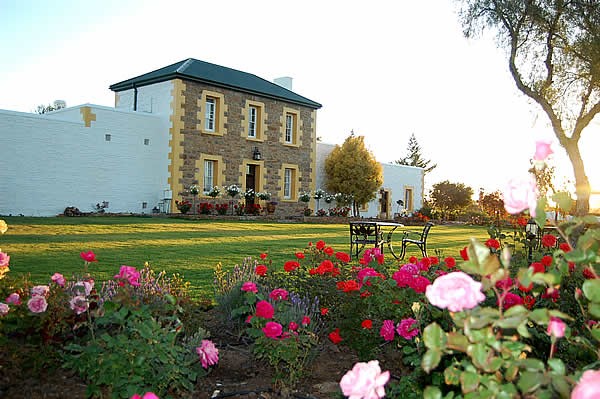So, you love the colour black. For many reasons, it has stayed a classic in fashion throughout the years. Timeless, elegant and sophisticated.
However, when it comes to events, some might tend to think of funerals or a Halloween theme when you mention black. But there is more to black than grief or scare tactics.
It can also be stylish, glamorous, tasteful and inspiring. We take a look at some beautiful black wedding decor that still says: Yes, we are happy!
If plain black feels too heavy, lighten it up with one metallic colour like silver or rose gold. White also works well, or another dark colour like maroon or purple.
View this post on Instagram
View this post on Instagram
View this post on Instagram
View this post on Instagram
View this post on Instagram
View this post on Instagram
View this post on Instagram
View this post on Instagram
View this post on Instagram
View this post on Instagram
View this post on Instagram
View this post on Instagram
View this post on Instagram
View this post on Instagram
Picture: Pexels
Valentine’s Day is drawing closer, and that means that you need to find the perfect present for your lover before time runs out. The past year has been…
Wedding invites used to be printed and delivered to each address but technology is now helping us save the trees and our time.
While e-invites used to be tacky, these days they are the most practical and often better solution. They have expanded beyond the standard, unflattering email. Now you can send beautifully designed invitations and have guests RSVP all through the same programme.
The RSVP can also include important information you need from guests like food preferences, plus-one details and even a song request. You can then easily access these spreadsheets without having to have put them together yourself.
Here are a few online sites that will do it all for you:
E-Vite offers free and premium invite options. The free versions are a bit simpler and don’t offer quite as much customisation but are a great option if you’re trying to save.
Greenvelope allows you to upload your own custom design or use one of their templates. It has a built-in RSVP tracker which even reminds guests about RSVP deadlines if they are about to miss them. The pricing is scaled for the number of invites starting at R350 up to R1050.
Paperless Post is one of the most popular e-invites on the market. You can add links to gift registries, to your wedding website and even guest accommodation options all within the beautifully designed online invite.
RSVPify focuses more on the backend. While it has customisable design and you can create the perfect invite. It has a strong engagement tracking, You can see if who and how many people have opened the invite, who RSVPd and easy follow-ups.
Picture: Pexels
Ever the drama queen, people may be surprised to hear that Paris Hilton is taking a more demure approach to her future wedding day. While she has always…
It’s probably a little early for jokes about the old ball-and-chain (note: it’s always too early), but if you’re going to be stuck in prison together, you want it to be The Old Jail in the town of Willowmore.
Built in the 1880’s, this prison-turned-boutique-guest-house north-east of Knysna oozes old-school charm. The Old Gaol, as it was then called, comprised a hospital cell, hard labour cells, awaiting trial cells, a female cell and kitchen cell.
After closing down as a prison in 1960, the property passed through many hands, and was uninhabited for almost 12 years, until the current owners took over and slowly turned the rustic grounds into a guest house, while still keeping many of the gorgeous Victorian features of the building. The cells and exercise areas have been converted into elegant rooms, each with its own private courtyard.

The Old Jail has three rooms in total, each air conditioned with modern amenities, high quality period finishes and private courtyards.
All three rooms are en-suite with original features, quality bedlinen and private entrance. They are easily accessible from the large safe parking area.
Farmers Suite 1 and Farmers Suite 2 have fully equipped kitchens and are two-roomed suites. Farmers Suite 1 has a sleeper couch for two sharing children 10 years and younger. Farmers Suite 2 has one extra bed for a child. This room has inter-leading doors with The Donkey Room for larger families.
The Donkey Room has an open plan bathroom with two single beds and is a sleep and go unit with an under counter fridge.


Full of history, the Karoo town of Willowmore has functioned as a farming and trading town since its discovery in 1819. There is an abundance of greenery and stunning hiking trails to explore, as well as many farmlands around. Take a trip to the Willowmore Town Hall, or visit one of the many museums around to explore and uncover the past.

If you choose to leave your room (after all, you aren’t actually in prison), Baviaanskloof Wilderness Area nearby offers several hiking, mountain biking and 4×4 trails.
Picture/s: The Old Jail
When deciding on an MC for a wedding, many opt for their closest and loudest friends to lead the day. However, being the Master of ceremonies is a…
An engaged couple was lucky enough to say their I do’s in hospital, moments before the groom needed to be sedated and put on a ventilator.
Elizabeth Kerr, 31, and Simon O’Brien, 36, were both admitted to Milton Keynes University Hospital with breathing difficulties on January 9 after contracting COVID-19.
The pair were kept in separate wards, and a kind nurse offered Kerr the opportunity to marry in the hospital as it may be their last chance, reports the BBC
They began putting plans together but needed to fast track the wedding as the groom’s condition deteriorated further. On January 12, it was so severe that he needed to be put on a ventilator in the intensive care unit.
The wedding ceremony was held in the ward moments before they intubated O’Brien. The ceremony was filmed for family and friends, and the hospital’s catering staff even provided a cake.
“With lots of teamwork… we were able to give them a wedding, not necessarily the wedding that they would have initially intended, but certainly something positive, remarkable and memorable for them to really hold on to,” nurse Hannah Cannon told the BBC.
Both are now recovering in hospital, and have been reunited in a recovery ward where they were able to kiss for the first time as a married couple.
This wedding was a special moment for Kerr, one she is eternally grateful for.
“If we hadn’t had each other and we hadn’t been given that opportunity to get married, I don’t think both of us would be here now,” she said.
Picture: Pexels




